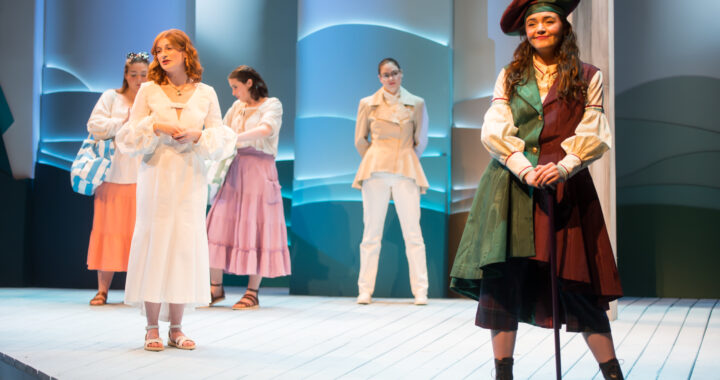“Thanks in Advance: Jason Robinson”: Multimedia duPont exhibit features digital art and themes of nature
3 min read
Buenas Noches From a Lonely Room, video, 2019. (UMWGalleries)
By LAURA MILSTEAD
Staff Writer
Now on display in duPont Gallery through Dec. 8 are the works of Jason Robinson, a professor of digital art at UMW. Robinson makes videos, films and prints and has had his work shown both nationally and internationally.
The exhibition is entitled “Thanks in Advance: Jason Robinson.” A common theme found throughout his pieces is aspects of nature. Many of the pieces in the exhibition contain elements relating to the outdoor world, whether it be trees, water, mud or even a scene of a beach, elements of nature were included.
The first thing that stood out to me were the lenticular prints. In this type of art, a lenticular lens is used to create an image that appears to give the illusion of depth as well as creating an image that moves and changes as it is viewed from different angles.
There were two of these types of prints in the gallery. They both depicted scenes of nature. One showed trees with water surrounding them. As you move the image appears to move as well. When viewed from one side, it almost appears to be upside-down. When viewed straight on, the image appears as a normal scene. When first viewing the piece, one may think that it is a normal picture; however, once the viewer moves, the piece begins to take different forms and almost comes to life. It is like viewing an image from three different perspectives, yet each perspective can stand alone as its own image.
In addition to the prints, the visitors are able to interact with one of the pieces being showcased. The exhibit features a virtual reality headset, which allows viewers to feel as if they are part of a forest scene. This is highly interactive; as they move around with the headset on, their view of the forest moves with it, eventually settling on a giant silver ball-shaped object. This leaves you wondering what this object is and its significance.
As I continued walking around the gallery, I then encountered a single channel video. At first glance it was noticeable that the image is moving. It shows rippling waves and then changes to a scene at the beach. What was surprising about the image was the direction that the waves were moving. Instead of rolling in the way a normal wave would, they were moving backwards and away from you. This gives the picture a different feel and differentiates it from a normal image.
From my perspective, the main focus of the exhibition was centered around digital art. However, there were aspects that were not digital. There were textiles that went along with the nature theme. For example, there was a textile in a rich green color that depicted trees with mirroring images that had been inverted. This gave the textile more dimension and grabbed my interest.
The work that I found the most interesting was a single channel video called “crash test,” the image showing cars in mud crashing into others. Where the cars hit each other is where the image begins to expand and form a new part of the image. The piece continues to move in this manner to create a moving image.
Overall the pieces in the gallery were interesting; each piece had characteristics that made it unique, so each piece was strong enough to stand alone. The exhibit is free and open to those affiliated with the university as well as the general public.











